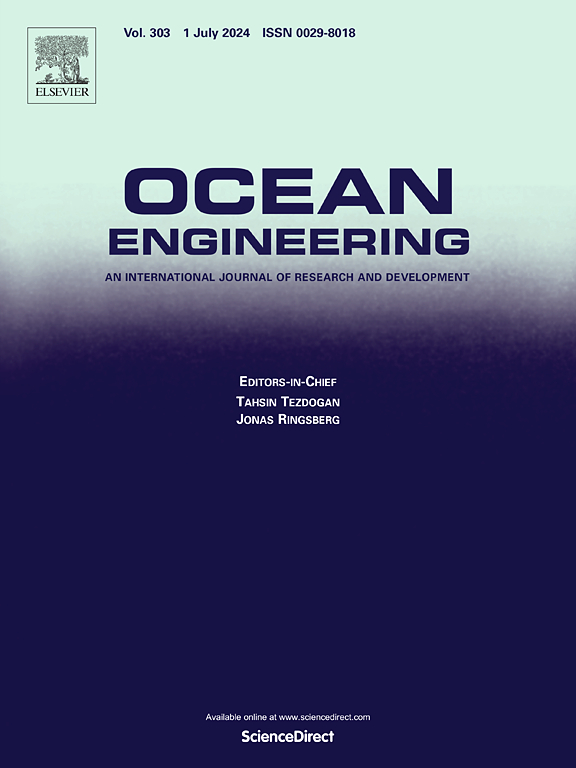Damping cable-based vibration control of pile-supported offshore wind turbine tower
IF 5.5
2区 工程技术
Q1 ENGINEERING, CIVIL
引用次数: 0
Abstract
The towers of pile-supported offshore wind turbines (OWTs) are prone to large-amplitude, multi-modal vibrations due to their low inherent damping and high flexibility, and softer foundation compared to onshore wind turbines. To suppress arbitrary-modal vibrations of the tower, a novel damping cable energy dissipation system is proposed, which converts the angular displacement of the bending vibrations into linear displacement, thereby driving the viscous damper to dissipate vibrational energy. Firstly, a third-order dynamic differential equation for the foundation-tower-damping cable is established, which simulates the rotational constraint of the flexible foundation on the tower using a torsional spring. Based on this, an analytical solution for the additional damping ratio provided by the damping cable is derived. Secondly, model experiments are validated the effectiveness of the damping cable in suppressing vibrations. Additionally, the influence of rotational constraint stiffness on the vibration reduction effect is analyzed. Finally, the effectiveness of the damping cable in suppressing vortex-induced vibrations (VIV) is examined using a coupled tower-wake oscillator model, and the numerical simulation is used to simulate the effect of vibration damping under wave loading. The study results indicate that, with a low damping coefficient, the damping cable can effectively suppress arbitrary-modal vibrations. Additionally, a decrease in the rotational constraint stiffness can enhance the damping effect of the damping cable.

基于阻尼索的桩支海上风电塔架振动控制
与陆上风力发电机组相比,桩支海上风力发电机组由于其固有阻尼低、柔性大、地基较软等特点,塔架容易出现大振幅、多模态振动。为了抑制塔的任意模态振动,提出了一种新型的阻尼索耗能系统,将弯曲振动的角位移转化为线性位移,从而驱动粘性阻尼器耗散振动能量。首先,建立了基础-塔-阻尼索的三阶动力微分方程,用扭簧模拟了柔性基础对塔的转动约束;在此基础上,导出了阻尼索附加阻尼比的解析解。其次,通过模型实验验证了阻尼索的抑制振动的有效性。分析了旋转约束刚度对减振效果的影响。最后,利用塔-尾流耦合振子模型验证了阻尼索抑制涡激振动的有效性,并通过数值模拟模拟了波浪荷载作用下阻尼索的减振效果。研究结果表明,阻尼索具有较低的阻尼系数,能有效抑制任意模态振动。此外,减小旋转约束刚度可以增强阻尼索的阻尼效果。
本文章由计算机程序翻译,如有差异,请以英文原文为准。
求助全文
约1分钟内获得全文
求助全文
来源期刊

Ocean Engineering
工程技术-工程:大洋
CiteScore
7.30
自引率
34.00%
发文量
2379
审稿时长
8.1 months
期刊介绍:
Ocean Engineering provides a medium for the publication of original research and development work in the field of ocean engineering. Ocean Engineering seeks papers in the following topics.
 求助内容:
求助内容: 应助结果提醒方式:
应助结果提醒方式:


